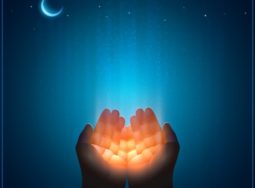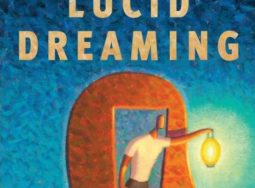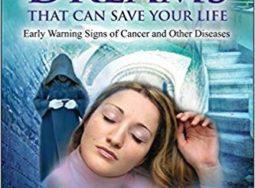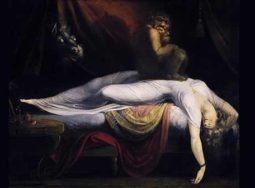Hypnogogic State – The transitional, twilight state between being awake and falling asleep. In this state it is common for paranormal phenomena to occur, including auditory and/or visual hallucinations, out of body experiences, sleep paralysis and sleep paralysis attacks.
Hypnopompic State – Same as the hypnogogic state, except this term refers to the transition from sleep to waking.
Out of Body Experience (O.B.E.) – When a person’s consciousness leaves the body and is able to observe the physical surroundings such as the bedroom they are in. This may also involve travelling around, yet still viewing the physical surroundings as we know them in waking reality.
Near Death Experience (N.D.E.) – (a form of O.B.E.) A person may be pronounced clinically dead, only to later come back to life later. Many will report conversations they overheard (for example between surgeons at the operating table if they died in a hospital) that are later confirmed, and the person would have had no way of knowing this information otherwise. This brings up the interesting and fascinating distinction between mind and brain, as consciousness (mind) is surviving without and beyond the death of the physical matter (brain).
Astral Projection – When consciousness leaves the physical body and travels, similar to an Out of Body Experience, but the travel is through a more dream like, other worldly realm.
Lucid Dreaming – Becoming aware of the fact that one is dreaming during the experience of having a dream. For more information read Robert Waggoner’s fascinating book “Lucid Dreaming”. For more info, go here: https://www.thedreamdetective.com/faq.html#lucid
After Death Contact (A.D.C.) – When a deceased loved one comes to visit us in our dreams. While some dreams of loved ones who have crossed over are ways of processing our loss, other are reported as feeling very ‘different’ than regular dreams. Some of the hallmarks of A.D.C. dreams are that they feel very real, as if the loved one were actually with the dreamer. The dreamer may report smelling grandma’s perfume or grandpa’s cigar, and often the dream takes place in the dreamer’s bedroom, which is not the case for most dreams. Sometimes a dream ‘already in progress’ may be interrupted by the appearance the deceased loved one, who almost always brings messages of comfort and love in any of these scenarios. Many people also have these dreams of former pets who have crossed over as well.
Shared Dreams or Mutual Dreaming – The experience of having the same dream at the same time as another person. Usually this occurs between people who are emotionally close such as siblings, close friends, family members or romantic partners. The degree of the ‘shared’ experience may vary from part of each person’s dream being the same (overlapping), to the entire dream being identical for both dreamers. People sometimes intend for a shared dream experience, visualizing it and agreeing on a meeting spot before going to sleep.
Sleep Paralysis – In R.E.M. sleep our body becomes paralyzed so that we don’t physically act out what we are dreaming about, as this could be very harmful to our self and others. When we wake up the paralysis releases, however sometimes there is a ‘glitch in the system’ where the paralysis takes a little longer to release. Becoming conscious and finding that the body is paralyzed can be a terrifying experience that about 20-30% of the population will experience at some time. However, it usually resolves itself and is nothing to be afraid of.
Sleep Paralysis Attacks – A phenomenon that sometimes occurs during the state of sleep paralysis, where the dreamer reports a visitation. The visitor is most often described as either a dark, shadowy figure, or something know as ‘the old hag’, who is reported to look something like a Halloween witch. This phenomenon has been reported all over the world through out history. Researcher David Hufford wrote a book about this called ‘The Terror that Comes in the Night’.
Nightmares – Scary dreams that often will wake us up with a pounding heart and covered in sweat. These are R.E.M. dreams and are important to pay attention to when working through life’s difficulties. If a nightmare relives a trauma and repeats with no progression or resolution over time, this would indicate a P.T.S.D. nightmare and professional guidance with an experienced professional is recommended.
Night Terrors – Different than a nightmare, these do not occur in R.E.M. sleep, but rather in stage 4, or the deepest, non-dream sleep. Often night terrors cause the sufferer to scream out loud, but upon waking they will have no recollection of any kind of dream or what happened.
Daydreams – A relaxed state (similar to a hypnotic trance) where creativity, imagination, problem solving and learning consolidation occur. As part of our circadian rhythm (similar to the 90 minute cycles between R.E.M. dreams when asleep), we have a natural tendency to daydream about every 70-120 minutes through out the day.
Precognitive Dreams – Dreams that pick up on potentials for the future that may or may not play out. There have been reports of people who have had a precognitive dream and later recognized a dangerous situation in waking life because of the dream. They were then able to make a course correction to prevent the potential negative outcome because the dream provided them with the warning and awareness to do this.
Clairvoyant Dreams – A dream during which the dreamer is able to witnesses an outside event (happening in waking reality) at the same time it is actually occurring.
Empathic telepathy – Similar to a clairvoyant dream, except that instead of witnessing an event as an outside observer during the dream, the dreamer experiences the event as if it were happening to them – in a sense assuming the identity of someone that the waking life event is actually happening to.








